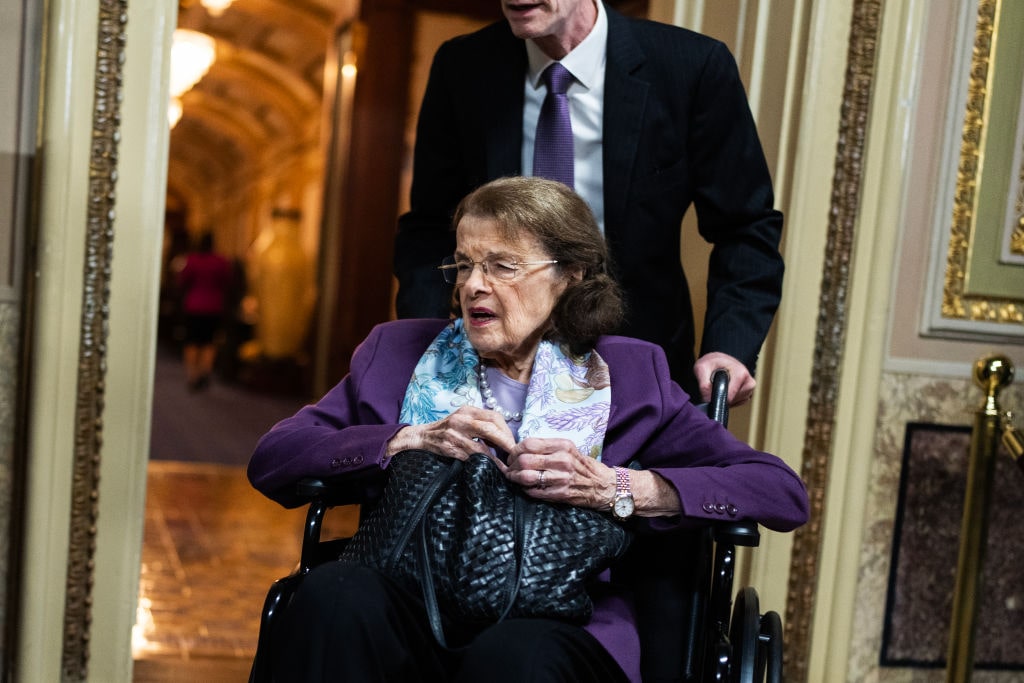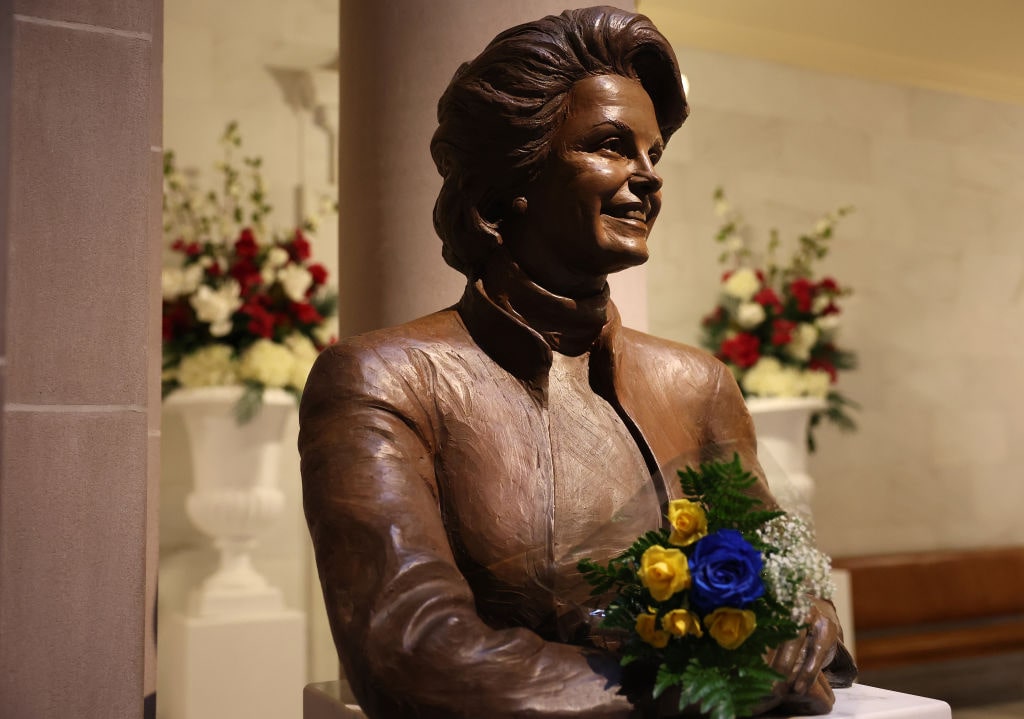She could have stepped down when her health first began to decline, maybe working with Gov. Gavin Newsom to select her replacement – a strategic retirement, if you will. She could have bowed out of the last election, perhaps endorsing someone else and lending a younger candidate her considerable political clout. But no – after 30 years in the Senate and despite her extreme age, failing health, and numerous calls even by her own party to resign, Dianne Feinstein insisted on being the senator from California one more time and finishing out this term.
Sen. Feinstein did announce earlier in the year that she wouldn’t be running for re-election in 2024. But her death on September 29, a little over a year before the next election, complicates things – both for the Democrat governor of her state who must appoint her replacement and for those already campaigning for her seat.
The Balance of Power
Does the new vacancy affect the Senate itself, though? Probably not. Since most bills in the upper chamber require 60 votes to pass, the Democrat majority of 48 registered members and three independents who typically vote with them was only useful for passing certain funding bills through the reconciliation process and confirming presidential appointments, both of which require a simple majority. Yes, the Californian’s death does leave a vacancy, but with just 49 Republicans to oppose party-line issues and Kamala Harris as VP to cast the deciding vote should one of the more moderate independents – or even a Democrat – cross the aisle to create a tie, that power remains largely unchanged.
Indeed, the biggest concern as far as the party’s ability to affect change seems to be her place on the Senate Judiciary Committee.
Democrats have expressed concern that Republicans won’t allow them to replace her on the powerful committee, leaving the majority party in a 10-10 vote deadlock with the GOP. Unlike the full Senate, committees don’t have tiebreakers, and ties don’t advance candidates. Without a majority, Democrats can’t advance Biden’s judicial nominees – at least not without some bipartisan assistance – likely meaning no further confirmations this term.

(Tom Williams/CQ-Roll Call, Inc via Getty Images)
Of course, top Republican senators said Friday after the news of Feinstein’s death that they would not attempt to block her replacement from taking her spot on the committee. “It’s a prerogative of the Democratic leader to put who he wants on the Judiciary Committee. So I don’t think that’s an issue,” Sen. John Cornyn (R-TX) told NBC News. “My assumption is that we’ll observe whatever the precedent is in this situation,” Senate Majority Whip John Thune (R-SD) said. “I mean, it’s an unfortunate situation, but it’s happened before and I assume that the same rules would apply.”
When Democrats attempted to “temporarily” replace Feinstein when she missed more than two months recovering from shingles, Republicans did resist, causing votes to be repeatedly delayed. But that was the “unorthodox procedure,” as Sen. Cornyn put it, since she was still a member of the Senate despite her absence. It’s different now that her seat is actually vacant, he said.
The Final Months of a Fading Feinstein
As Liberty Nation’s Joe Schaeffer pointed out in June, Feinstein returned to Congress “wholly incapable of performing her senatorial duties.” Her own staff confirmed she had suffered brain inflammation from the shingles. The New York Times reported that she was surrounded constantly by a “phalanx of aides” who “push her wheelchair, remind her how and when she should vote and step in to explain what is happening when she grows confused.” At times, she even expressed confusion about the basics of how the Senate functions, The Times noted.
Dianne Feinstein was once a powerful force in the Democratic Party – a leading lady of the left – but in her final months, she was reduced to little more than a placeholder vote, to be wielded however the party saw fit. The senator’s passing won’t likely have much effect on the Senate itself – beyond holding up any more judicial confirmations until she’s replaced. It’s in the act of finding a replacement itself, and then the ramifications of that decision on the 2024 election, that creates the most chaos.
Replacing the Left’s Leading Lady
For the second time in just a few years, California Governor Gavin Newsom finds himself in the position again to fill a vacancy in the US Senate. When then-Senator Kamala Harris left her seat to accompany Joe Biden into the White House, Newsom replaced her – the only black woman in the Senate – with Alex Padilla, a Latino man. The backlash from the left was immediate and severe. How dare Newsom – a white man – fail to replace Harris with another black woman? Never mind the fact that Democrat voters re-elected Padilla in 2022.
 Newsom learned from his “mistake,” and he has set forth two criteria that must be met by whomever he picks to replace Feinstein: First, she’ll be a black woman. Second, she’ll be a “caretaker,” someone to hold the position until the 2024 election, ostensibly without running for re-election and ruining all the hard work by those already campaigning for the seat. In other words, it won’t be one of the high-profile Democrats already running for the office. “It would be completely unfair to the Democrats that have worked their tail off,” Newsom said earlier in the month about appointing a candidate should this seat become vacant before the next election. “That primary is just a matter of months away. I don’t want to tip the balance of that.”
Newsom learned from his “mistake,” and he has set forth two criteria that must be met by whomever he picks to replace Feinstein: First, she’ll be a black woman. Second, she’ll be a “caretaker,” someone to hold the position until the 2024 election, ostensibly without running for re-election and ruining all the hard work by those already campaigning for the seat. In other words, it won’t be one of the high-profile Democrats already running for the office. “It would be completely unfair to the Democrats that have worked their tail off,” Newsom said earlier in the month about appointing a candidate should this seat become vacant before the next election. “That primary is just a matter of months away. I don’t want to tip the balance of that.”
Some of the names put forward so far by political commentators are Secretary of State Shirley Weber, San Francisco Mayor London Breed, State Controller Malia Cohen, racial and economic equity advocate Angela Glover Blackwell, Los Angeles County Supervisor Holly Mitchell, and LA Mayor Karen Bass. Rep. Barbara Lee doesn’t technically fit the requirements, as she’s actively running for the seat, but there is considerable pressure for Newsom to appoint her anyway, and many believe he’ll cave.
Whoever the governor appoints will get the benefit of just over a year of incumbency (assuming he makes a decision soon), giving a possibly ambitious pick the chance both to decide she does, in fact, want to keep the office and to establish a record on which to run in 2024. Few incumbents seem to disappoint their constituents enough to actually get replaced, and that could cause problems for the three US representatives from California who had hoped to replace Feinstein in 2024, the aforementioned Lee, Adam Schiff, and Katie Porter. All three would fit the left’s desire to have a more progressive person in place of Feinstein – Porter and especially Lee more so than Schiff. But should Newsom’s pick find herself surprisingly comfortable in her new Senate seat, none of that might matter.




